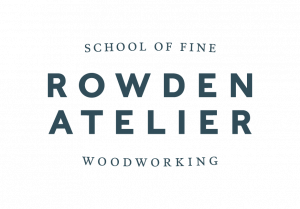Japanese Plane Secrets 6
Soo…. now to getting the damn thing to work. The task is to bring these three components, the plane body, the blade and the back iron together. Having fitted the blade in the body have a good look at the back iron. This in a decent plane will be of laminated construction and quite sophisticated form .
Be sure there is excellent contact between blade and the front edge of the back iron and look to have a very fine bevel at about 70 degrees on the end of the back iron . This bevel is extremely important as it is the first thing the shaving will contact after it has been cut from the board.
Set the back iron a hairs thickness behind the cutting edge. This is a course setting when you know how gets going, try for half this!!
Set the body on the bench and tap the blade assembly with a small steel hammer. I have found that sliding the body on the bench tells me when I have gone too far and need to tap out the blade a bit. This is done by tapping on the back top corner of the body.
“Tap and try” is the old name for this, it means just that. It is wonderfully accurate a light tap will take the blade just so far. Blade cutting on the right tap the blade on the right to move it over . One tap will usually do it.
Have a look at the mouths on these planes. I have never seen plane mouths this fine. My best quality Norris plane is about twice as large. This is the key to getting the superior performance that I believe these tools are capable of. I have struggled a bit getting here, buying cheap Ebay offerings is not the way to start. I have six japanese planes on my bench here and one more on its way from Japan. Maybe only four are going to be usable.
You will need to check the sole with a straight edge and a good light. Not all planes are finishing planes I have two now with quite rounded blades to help me flatten a surface a bit like a scrub plane. The first has a rounded plane body and blade, the second has a flatter body with a blade set up to only cut in the centre . The smoothing or finishing plane is the last to be used and the most expensive and ticklish tool to work with. This has a flatter blade at the cutting edge creating a wide shaving
This is the plane with the hollows scraped in the plane sole. A well sharpened cabinet scraper will do it, just in front and just behind the blade leaving a contact area around the blade and by the toe. Polished wood should not be touched by the plane body after being cut.
The next stage of my work will be to soak all the bodies in oil to help condition them and keep them from changing with the weather.
In the end after reading books and website forums and struggling fitting clapped out irons to cheap bodies I came to my senses. I bought a proper expensive new plane from Japan. I think i paid about £500. The blade was exquisitely fitted to the body and the sole prepared with slight hollows so that it pulled gossamer shavings right out of the box. Seeing how this was done, the tension of the blade, the tolerances, gave me the chance to go back and rework two of my earlier planes.
Now I can routinely create good fine shavings in most hardwoods. The term hardwood is a problem that you must address. These planes were designed to work on softwoods. They can do our work but need a cutting angle of 41 degrees the standard 38 degree body will probably disappoint you. The quality of the blade and the choice of steel is another consideration. Maple is a much tougher problem than pine.
This work is not for someone who has never used a plane before. You need to understand why these complex components are the way they are, and appreciate what you have in your hands.
Maybe I am getting old but I like the lightness of these tools they fit my hands and respond to my touch . These are grouchy, difficult, highly strung thoroughbreds. But, get them going and they respond to you and the way you handle them like a Porche 911. Responsive, sensitive, effective and fast.
My guide to all things technical regarding Japanese planes has become Invaluable. Not even 35 years working wood got me anywhere near the truth. Tomohito -san of Iida Tools has guided and suggested various blacksmiths and selected blades within their product range that have been suited to my needs. If you too need a guide he can be contacted on http://japantool-iida.com/inquiry/index.html





